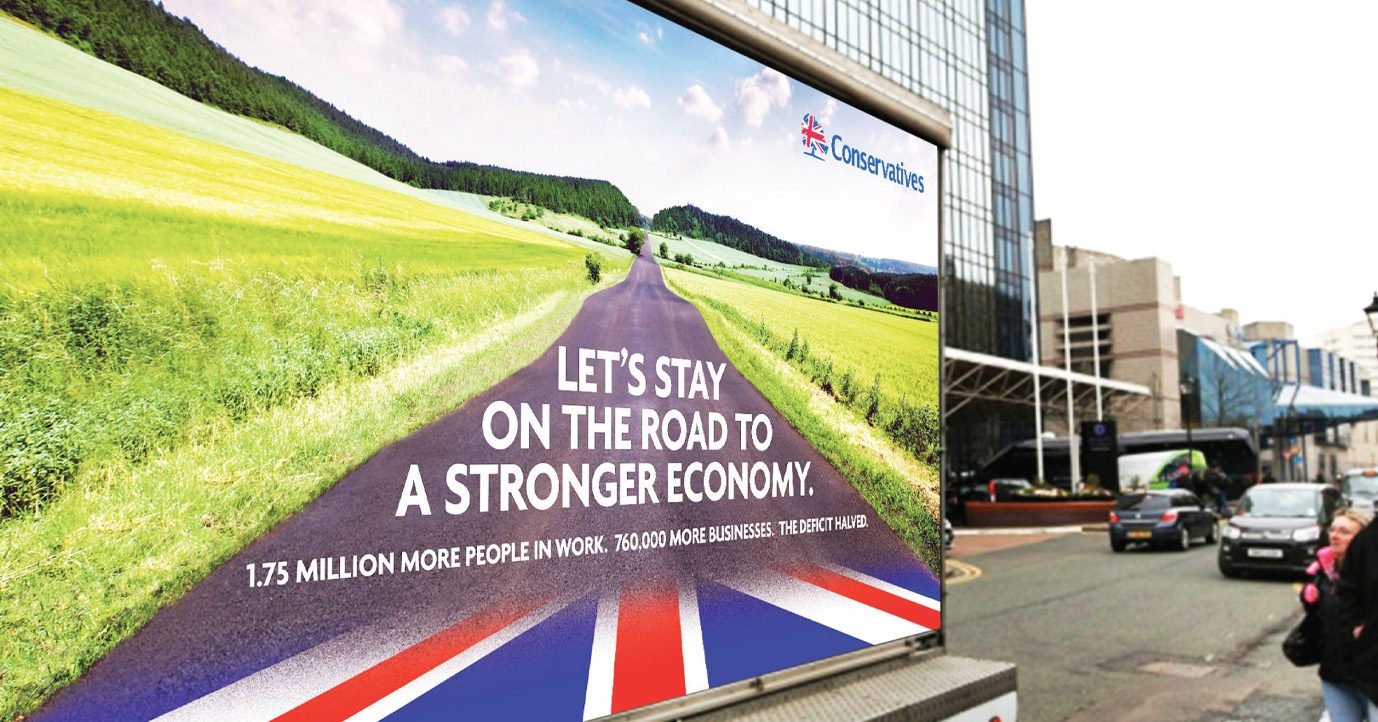
Here is the text of my speech to the Conservative Home Spring Conference this afternoon in which I discussed the detail of my latest battleground poll. The slides from my presentation are here.
—–
Good afternoon, and as the proud proprietor of Conservative Home let me add my welcome to our second annual Spring Conference.
As you will know by now, I am here to tell you what is really going on.
To me, the role of the pollster is quite separate from that of a strategist. I find out what people think and try to work out what it means – but I do not intend to stray into the field of telling any party what they should do. In any case, after last week’s elections there will be no shortage of advice on offer.
The council elections have been more or less digested, but there is more excitement to come before the weekend is out. We don’t know for sure which party will come first in the Euro elections – or come to that, second, third, fourth or fifth.
We expect, however, that the established parties will have been given a kicking they won’t forget. That will lead to all sorts of frenzied analysis and speculation about what it all means. Why did people vote as they did? Where did all the UKIP voters come from? And what do they expect to do next?
Well, as we pollsters say – you can guess, or you can find out.
In the 12 hours after the polls closed on Thursday, I took the trouble to ask 4,286 people who had voted in the European elections what they thought they were up to.
What I am about to show you is not an exit poll. If it were, I would be in trouble with the European Commission, and we can’t have that. It is against the law to publish a survey predicting the result before voting has ended in all EU countries.
I asked people who had turned out why they had voted for their chosen party. Nearly four fifths of those who had voted UKIP – a higher proportion than for any other party – said one of the top three reasons was that the party had the best approach to Europe.
Six in ten said one of the reasons was to send a message that they were unhappy with the party they usually support. Similar numbers said it was a general protest to show they were unhappy with all the parties at the moment.
I asked how people had voted at the last general election.
More than half of those who voted UKIP on Thursday supported the Conservatives in 2010. More than one in ten Liberal Democrat votes on Thursday, and 6% of Labour’s support, came from people who had voted Tory at the last election.
Fifteen per cent of UKIP’s vote came from Labour, and nearly a fifth from the Liberal Democrats.
Next I asked who they thought would be the best Prime Minister.
Among the UKIP voters, not many mentioned Nick Clegg.
Just over a quarter of them said it would be Ed Miliband.
But two thirds of the voters in my survey who voted UKIP on Thursday said David Cameron was the best available Prime Minister.
I should also add that 8% of Labour voters said this, as did nearly a third of Liberal Democrats.
Whom did they most trust to manage the economy in the best interests of Britain – Ed Miliband and Ed Balls, or David Cameron and George Osborne.
Just over three in ten UKIP voters chose the two Eds.
And nearly seven out of ten chose Cameron and Osborne.
So did one in ten Labour voters, as well as two thirds of Liberal Democrats.
Of course, many UKIP voters would probably say they don’t particularly trust either pair. But when push comes to shove, the choice is clear. The election campaign will need to clarify that choice.
Now the million dollar question: which party do you think it most likely that you will end up voting for in the general election next May?
Half of those who voted UKIP – or perhaps more to the point, only half – said they would probably vote UKIP again.
Just over one in ten said they would vote Labour.
More than a fifth said they would probably vote Conservative, and another 14% said they didn’t know what they would do.
We may be in the era of four-party politics, but there is nothing to say their support will stay the same as it was on Thursday.
One more question from this poll – and one with an important lesson for the campaign. I asked those who voted in the Euro elections what issues would matter most in determining their vote next year. The economy came top, of course – but nearly as many people mentioned the NHS as immigration.
It would be a mistake to try to re-fight this election and let last week’s issues dominate the debate for the next year.
I have always been a strong advocate of learning the right lessons from an election – that is what prompted me to write Smell The Coffee in 2005 and Minority Verdict in 2010.
But having learned those lessons it is time to move on and concentrate on the task in hand. And as from this weekend, the task in hand is the general election.
The national polls are effectively mood music. More than any election for a generation, the results next May will be counted in individual seats. That is why the marginal constituencies are so crucial.
Over the last few weeks I have polled more than 26,000 voters in 26 seats at the heart of the Conservative-Labour battleground. These comprise the 12 most marginal seats held by either party. I have also added two seats – Great Yarmouth and Thanet South – which, though enjoying slightly bigger Tory majorities, are likely to be high on UKIP’s target list.
For the first time in my polling of marginals, the sample size of 1,000 in each constituency means we can publish the results on a seat-by-seat basis. All the data for each seat will appear shortly on my website, LordAshcroftPolls.com – though it would be polite to wait until I have finished talking before you check.
This is the first in a series of similar surveys I will be conducting in the run-up to the election. In the next few weeks I will be publishing a poll of our battleground with the Lib Dems, and then Labour’s battleground with the Lib Dems. We will return regularly to each group of seats to track progress over the year.
I should also make the point that even though these are the most marginal seats, CCHQ will probably point out they are not necessarily all target seats. That may be true – certainly in 2010, the party took other factors into account in targeting resources beyond strict marginality. But there will be a great deal of overlap, and this survey gives a pretty good idea of what is happening on the front line.
Also, don’t forget this is a snapshot, not a prediction.
When we ask the standard voting intention question – “if there were a general election tomorrow, which party would you vote for” – we find a 10-point lead for Labour across the battleground as a whole, with UKIP on 20% and the Liberal Democrats on 7%.
We then ask people how they would vote “thinking about your own constituency and the candidates who are likely to stand there”. This can make an important difference in seats where the Lib Dems are the main challengers or incumbents, though the effect is more muted here. One thing that is notable – and was a consistent pattern in nearly all seats – was that UKIP lost a couple of points when people were asked to think specifically how they would vote in their own area.
The 12-point Labour lead on the local voting intention question amounts to a 6.5% swing from the Conservatives to Labour since the 2010 general election. If that were to be repeated elsewhere it implies 83 Labour gains from the Tories.
A project on this scale inevitably takes time to complete. Does the recent narrowing in some national polls mean the result here looks unduly pessimistic?
Unfortunately not. During the course of my fieldwork, a total of 59 national voting intention polls were published. They showed an average swing of 5.5%, meaning things look slightly worse in the marginals than in the country as a whole. The difference may seem small, but in the marginals it’s all about the margins. And bear in mind that to be the largest party, the Conservatives will probably need to be 4 or 5 points ahead of Labour in terms of national vote share.
Here is the gruesome detail. Another reason to warn against assuming a uniform swing is to see how un-uniform the results here look. In the 12 most marginal seats we see Labour leads of between 2 points and 14 points, and swings of between 2% and 8%.
There is also a great deal of variation in the UKIP share. They are only in single figures in Cardiff North, but Great Yarmouth and Thanet South look at this stage like three-way marginals – and in Thurrock UKIP are in second place. We will see in future rounds whether they can sustain this level of support once the excitement of the European elections has died down.
Labour’s lead looks more solid in the seats they already hold – though broadly speaking they look more comfortable in the Midlands and North than they do in London and the South.
But note also that three of these seats – Dudley North, Great Grimsby and Walsall North – currently show UKIP in second place.
The vote share for our coalition partners has fallen by more than half across the battleground, to 8%.
So, as Jacob Rees-Mogg might say, whither the Lib Dems? (Actually that’s not fair. Jacob would probably say it in Latin).
Well, if you think the Tories have problems, spare a thought for Nick Clegg. Liberal Democrat voters from 2010 are now more likely to say they would vote Labour than to say they would vote Lib Dem again. One fifth have switched either to the Conservatives or UKIP.
But they are also more likely than any other party’s former voters to say they don’t know what they will do. As I have said before, I would be surprised if their general election performance ends up being as bad as the polls currently suggests.
As it stands, 13% of Labour’s current vote in these seats comes from people who voted Lib Dem at the last election. Those switching to Labour are twice as likely to come from the Lib Dems as to come from the Tories.
We will see next month whether this pattern is repeated on the Lib Dems’ own battleground.
To continue our Jacob Rees-Mogg tribute, whence UKIP?
In these seats, a quarter of those who say they would vote UKIP supported the Tories at the last election – as many as have switched from Labour and the Lib Dems combined.
But it’s also worth noting that three in ten current UKIP supporters did not vote in 2010 – and the best indicator of whether someone will vote at the next election is whether they voted at the last one.
15% of 2010 Tories now say they will vote UKIP – twice the number who say they will vote Labour. A further 13% of 2010 Conservatives say they don’t know how they will vote.
Though the Tories have obviously suffered defections, there has been some movement in the other direction. More than one in ten current Conservative voters supported another party in 2010.
Just under half of all voters in these seats say they will definitely not vote Conservative at the next election. More than half rule out voting Liberal Democrat, and a majority also say they would not vote UKIP. Only 38% rule out Labour.
But it is instructive to look at exactly who rules out whom. In most of these seats, the remaining Lib Dem voters are rather more likely to say they definitely won’t vote Tory than to say they will definitely not vote Labour. Is there potential then for the Lib Dem vote to be squeezed further if some of them decide to vote tactically?
Overall, two thirds of UKIP supporters rule out voting Conservative. But this is only true for 41% of those who voted Tory in 2010. In other words, most Conservative-UKIP switchers are at least open to the idea of coming back.
I think it is also encouraging that nearly half of Lib Dems and nearly a quarter of Labour voters hold out the possibility of switching to the Tories.
Next we asked people how they expected the economy to do over the next year. A small majority thought things would go well for the country as a whole and a slightly bigger majority thought things would go well for themselves and their families. People were more optimistic than pessimistic in every constituency on the list except Walsall North. And as is often the case with questions like this, men were considerably more optimistic than women.
Not surprisingly, voters for the two coalition parties were the most likely to say the economy would do well. But a majority of Labour voters also thought this, both for the country and for themselves. In other words, the fact that someone is optimistic about the economy does not in itself guarantee that they will vote Tory.
In the London seats, around two thirds of voters were optimistic about the economy. In most other seats, the majority expecting things to go well was rather more slender.
But I couldn’t help noticing one exception.
Outside London, the voters who are most optimistic about Britain’s economy are the constituents of the Shadow Chancellor of the Exchequer.
Across the battleground, 29% of voters said they were satisfied with the job David Cameron is doing as Prime Minister.
A further 28% said they were dissatisfied, but they would rather have him in charge than the alternative.
In these key battleground seats, fewer than one in three voters said they would rather have Ed Miliband as Prime Minister than David Cameron.
In some seats, such as Thurrock and Waveney, as few as a quarter of voters would prefer to see Ed Miliband in Number 10.
At the other end of the scale, in Wirral South, a stunning 34% of the electorate would rather Ed was PM.
In fact only two thirds of Labour voters themselves said they would rather see Ed Miliband as Prime Minister than David Cameron. Only a quarter of UKIP and Lib Dem voters think the same.
UKIP voters are the most likely of all to say they are dissatisfied with Cameron, but prefer him to Miliband. And if we look specifically at Conservative defectors to UKIP, a total of 85% would rather see Cameron as PM than his opponent.
All this ought to be good news. It underlines the importance of the idea that a vote for UKIP helps to put Miliband in Number 10. But as I found in my recent polling on Europe, only about one in seven UKIP defectors currently both believe that statement and say it could make a difference to their vote.
And let’s not forget that as things stand, even though all these people prefer our leader, they still don’t say they’re going to vote Conservative. Over the next year, they have a decision to make. How many of them will switch parties, and how many will compromise on their preferred Prime Minister?
If I knew the answer to that I would be giving Ladbrokes a run for their money.
One of the most instructive things you can do in a battleground poll is find out what is happening in local campaigns.
We asked people if they had received literature, visits, letters, phone calls or emails from any of the parties in the last few weeks.
There were considerable variations between seats, mostly accounted for by how late in the European campaign they were surveyed. But overall, the ground war looks pretty closely contested.
The Conservatives were ahead or level in 12 of the 26 seats, and Labour ahead or level in another 12. Both parties were more visible in seats they are defending.
Perhaps surprisingly, UKIP were ahead or level in six seats: Thanet South, Dudley North, Southampton Itchen, Telford, Walsall North and Wirral South.
The ground war matters in these seats – as I say, in the marginals it’s all about the margins. It may not be a coincidence that in the Conservative-held territory, the seat where voters were most likely to have heard from the local party also had the smallest erosion of the Tory vote share. That was Stockton South, so congratulations to James Wharton and his team.
It would be unkind to name the worst performers here. I will send a memo to Lynton instead.
When it comes down to it, what would people like to see as the result of the next election?
Not surprisingly given the voting intention figures, a Labour government is the most popular outcome. Perhaps more surprisingly to most people in this room, a significant chunk of the electorate actually like the idea of coalition government, and want another one. Only four fifths of current Conservative voters say a Tory overall majority is their preferred result.
That is obviously something to bear in mind if Conservatives are tempted over the next year to start setting out the kind of Tory utopia they could unleash if only they had Whitehall to themselves.
Liberal Democrat voters are evenly divided as to whether they would rather be in coalition with the Tories or with Labour.
Those who have switched from the Lib Dems to Labour since 2010 overwhelmingly want to see Labour in government, and more than two thirds of them want to see a Labour majority.
What about UKIP voters?
Overall, 43% would like to see the Tories in office rather than the alternative, and 37% would prefer Labour – whether with a majority or in coalition. One in five UKIP voters say they don’t know what they want the outcome to be – which reinforces the point that one of our tasks is to show that it matters who wins.
Among those who have defected from the Tories to UKIP, a Conservative overall majority is by far the most popular result: 61% of them say that is the outcome they prefer.
Only one in ten of them would rather see Labour in government. This may start to matter more as the decision gets closer.
A few final thoughts.
First and foremost, and at the risk of repeating myself, this is a snapshot not a prediction. There is still a year to go, and as I have found in the Ashcroft National Poll, only around half the electorate has definitely decided which party to vote for.
It will be a battle, but remember this. If the Conservatives can switch one in six Labour voters – two thirds of those who say they’re willing to consider the party – this picture looks very different. Start with the ones who trust the Tories on the economy and prefer David Cameron as Prime Minister.
Meanwhile, I will continue to ask the voters impertinent questions, and if you sign up for news alerts at LordAshcroftPolls.com, you will be the first to know the answers.
Thank you very much.


